Indoor hippeastrum: how to care after flowering?
In flowering houseplants that reproduce by bulbs, there is a distinction between the growing season and dormancy. Usually, during flowering, a lot of attention is paid to the plant, creating optimal conditions for growth and development. During the rest period, they forget about the green friend, and this leads to sad consequences for the indoor flower.
Hippeastrum is considered one of the most common perennials in indoor floriculture. The beauty of the plant makes it one of the real kings of flowers. Moreover, the species diversity of the bulbous culture is great, not to mention the hybrids bred by breeders.
Content:
- Hippeastrum - plant description
- Conditions for growing a flower
- The rest period of the hippeastrum is a characteristic of its course
- Plant care after flowering
- Terms and rules for transplanting ornamental culture
- The consequences of improper care
Hippeastrum - plant description
As a member of the Amarilissaceae family, hippeastrum belongs to bulbous crops. Inside the fleshy spherical bulb, several inflorescences develop, which are laid through four leaves. Depending on the number of green long leaves of the linear type, the number of peduncles formed the next year is also determined. The length of perennial leaves can sometimes reach eighty centimeters. They appear during the active period of the life of the hippeastrum.
The decorativeness of the plant consists in its large flowers, reaching a diameter of twenty or more centimeters.
The colorfulness of the colors, their variety, the presence of patterns on the petals - all this makes flower growers plant a plant on their windowsills. Often, during the active growing season, from two to six large funnel-shaped flowers with rounded or pointed petals, similar to lilies, appear on a hollow stem. The lifespan of one flower is no more than ten days. Hippeastrum blooms in late winter - early spring. Then a box with seeds remains on the stem. But only dark flower varieties can be propagated by seeds, since light ones belong to hybrids.
Of the variety of plant species, the most popular is the royal, reticulated, reddish hippeastrum. There are hybrids for the garden with pink, orange, red colors. The bulbous culture was brought to Europe from South America. The alkaloids contained in the leaves and stem of the flower cleanse the air from pathogenic viruses and bacteria, and have a positive effect on the nervous system of the owners of the house. In addition to beauty, hippeastrum brings peace of mind to the house.
Conditions for growing a flower
After purchasing the hippeastrum bulb, it must be lowered for 2-3 hours in a container with warm water. Only after that a pot of soil is prepared. A drainage layer is poured at the bottom of the container, and a nutritious loose soil substrate is placed on top. During planting, do not forget that the bulb protrudes from the ground by a third or half.
For an indoor flower, create conditions such as:
- good lighting
- the air temperature is twenty degrees Celsius
- moderate humidity
Watering the onion at this time is best done in moderation, avoiding moisture on the bulb. Too vigorous watering will lead to active growth of the leaves, and the flower arrow will slow down in development.
As soon as the length of the flower arrow reaches ten centimeters, fertilization begins. Recommend from dressings a complex of minerals for bulbous indoor plants or a solution chicken droppings in a ratio of 1:40. If the right conditions are created, then in a month the hippeastrum will bloom.
To make the flowering process last longer, you can slightly lower the indoor temperature. After wilting, the flowers are cut to prepare the bulb for the next growing season.
The rest period of the hippeastrum is a characteristic of its course
A feature of the plant is a clear distinction between its flowering and dormant periods. The hippeastrum is at rest when it does not bloom, does not give new shoots. The onset of the dormant period can be controlled because it depends on the early or late forcing of the plant.
But the optimal rest time is considered from November to December or January.
It is at this time that the bulbs begin to recover from flowering. All processes inside seem to be suspended, and they last for one to three months. In this case, the bulbs need to create the appropriate conditions, then forcing them will be successful. They are placed in a dark room with moderate air humidity and a temperature of at least fifteen degrees Celsius.
After the first stage, the plant is transferred to a warm room, where it is left for one to two weeks. Only when the arrows of the peduncles appear, they take care of the hippeastrum as usual, placing it on a sunny windowsill and watering it abundantly. A dormant period is necessary for the plant in order for the bulbs to accumulate a sufficient supply of nutrients for forcing.
Plant care after flowering
The yellowed leaves of the plant will tell about the transition of the hippeastrum from an active lifestyle to rest. Here it is important to correctly prepare the flower for the dormant period:
- The yellowed leaves are cut off.
- They try to water a little, reducing the procedure to one watering in three weeks.
- The flower pot is placed in a cool, darkened room.
- To prevent the onion from germinating for a long time, it is taken out of the pot, wrapped in paper and placed in the lower section of the refrigerator.
- At the end of winter, you can place the bulb in the ground, water it abundantly once and put it in a room where the air temperature reaches eighteen degrees above zero.
- The subsequent flowering of the hippeastrum depends on the state of the bulb sent to rest. Before germination, the scales of the bulbs must be firm. Otherwise, she will have to gain strength by lengthening the rest.
- Do not forget that an enlarged green mass is required for the bookmarking of peduncles. There must be at least four leaves on the plant, otherwise the hippeastrum will not bloom.
By properly caring for the decorative perennial after its flowering, you can achieve good results in the active development of the plant during the growing season.
Terms and rules for transplanting ornamental culture
Every year in early March, before the flower awakens or in November, before retirement, it is transplanted; for a three to five-year culture, this can be done once every two years.
Transplant rules:
- The procedure begins by preparing a container for a flower. The size of the pot for the hippeastrum should be ten centimeters larger than the volume of the bulb.
- A layer of drainage from pebbles, crushed stone is laid on the bottom. For the base of the substrate, they take sod land, adding to it an equal amount of peat, humus, river sand. Soil for bulbs is also offered by specialized stores.
- The soil is required disinfectby spilling it with steep boiling water or 1% potassium permanganate solution.
- The bulbs are placed in a loose soil mixture so that they come out to the surface by a third. This makes it easier to monitor her condition.At the same time, the perennial is watered moderately, preventing the water from stagnating in the ground.
- In order for the sun's rays to warm the sprouts that have appeared, put containers with hippeastrum on the windowsills located on the east or west side of the house.
Two weeks later, the bulb will shoot the first arrow. Then you can be sure about the flowering of the perennial. Only correctly carried out actions from the moment of flowering of the hippeastrum to its transplantation contribute to the ejection of the flower arrow.
The consequences of improper care
Many people grow a perennial so that it can delight with beautiful flowers. If this does not happen, then this is due to:
- small, less than seven centimeters in size
- abundant growth of green mass
- strong deepening of the bulb during transplanting
- a spacious pot when the distance from the bulb to the walls is more than two centimeters
- lack of fertilization;
- drying or decay of the bulb during dormancy
If the plant is properly looked after after flowering, then the number of peduncles should increase in the subsequent growing season.
More information can be found in the video:



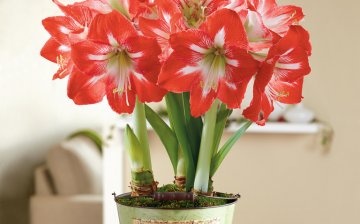
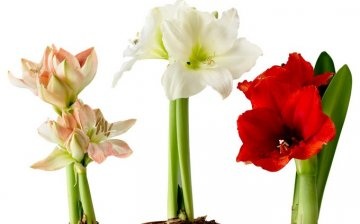
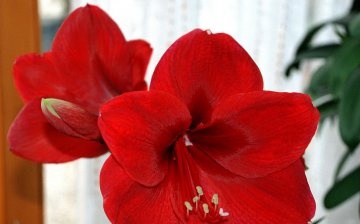

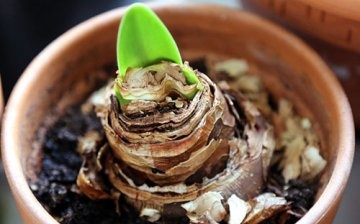
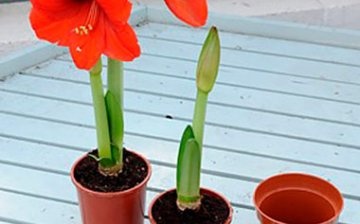
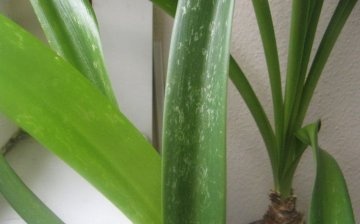







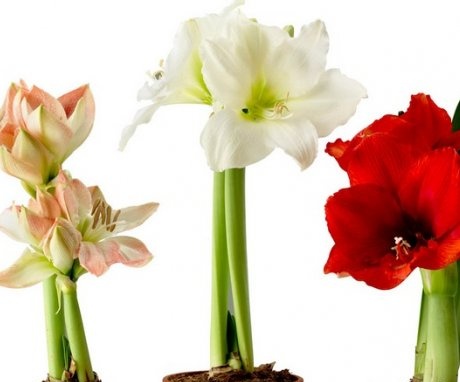

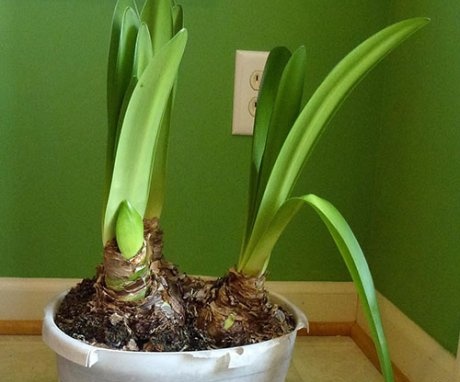
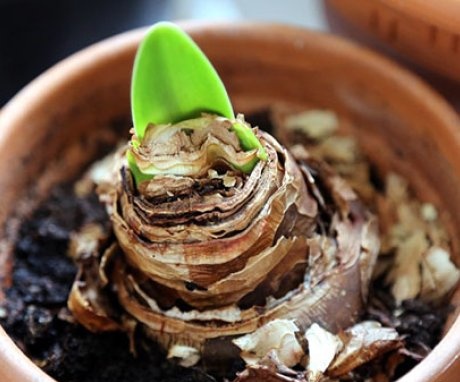
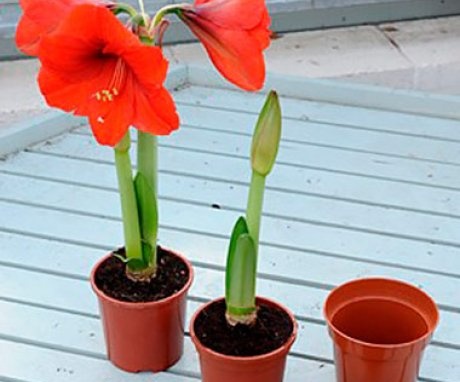
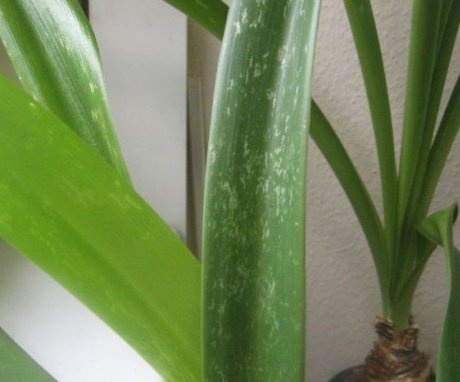
What's the beautiful! I have never had such a miracle! It is difficult to find a flower that would lead so brightly at home. I will definitely try to plant a hippeastrum. I think, following all the recommendations, the result will be excellent.
A very beautiful flower. They gave me an onion, but it is small, it must be put in the refrigerator, as advised. I remember at school, we have this flower on the windowsill in the classroom, we did not arrange any periods of rest for him, and he also pleased with his flowering.